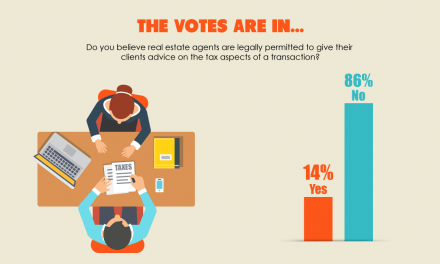The tenancies in real estate
Different types of tenancies and properties trigger different termination procedures for the landlord, and different rights and obligations for the tenant.
Leasehold estates, or tenancies, are possessory interests in real estate. Four types of tenancies exist:
- fixed-term tenancies;
- periodic tenancies;
- tenancies-at-will; and
- tenancies-at-sufferance, also called holdover tenancies.
To initially establish a tenancy, a landlord transfers to the tenant the right to occupy the real estate. This right is conveyed either in a writing, orally or by the landlord’s conduct, called a grant. If the landlord does not transfer by grant the right to occupy, the person who takes possession as the occupant is a trespasser.
Fixed-term tenancies, periodic tenancies and tenancies at will have agreed-to termination dates, or can be terminated by notice.
A holdover tenancy occurs when a tenant continues in possession of the property after their right to occupy has expired. This holdover of possession without a contractual right is called an unlawful detainer (UD).
A landlord needs to file a judicial UD action to have a holdover tenant evicted. To be evicted, a tenant’s right of possession under the tenancy granted is to first be terminated either by service of the proper notice or expiration of the lease. Plainly speaking, the tenant needs to unlawfully retain possession of the property before the tenant can be evicted for unlawful detainer.
The type of notice required to terminate a tenancy, other than a fixed-term lease, depends on the period of the tenancy, length of the occupancy and location of the property (e.g., rent control). [Colyear v. Tobriner (1936) 7 C2d 735]
The fixed-term tenancy
A fixed-term tenancy, also called a lease or estate for years, is the result of an agreement between the landlord and the tenant for a fixed rental period, also called the lease term. If the rental period is longer than one year, the lease arrangement is required to be in writing and signed by the tenant to be enforceable under the Statute of Frauds.
The written document which sets the terms for rent and conditions for occupancy creating a fixed-term tenancy is called a lease agreement
A lease agreement is required to have a commencement date and an expiration date. [Calif. Civil Code §§761, 1624]
During the term of the lease, the tenancy can only be terminated and the tenant evicted for good cause. Even then, service of a three-day notice to vacate the property (or if curable to cure the breach) is required. [See RPI Form 576]
Editor’s note – Different eviction rules apply if the property is subject to Just Cause eviction requirements. For more, click here. For more on the eviction moratorium in effect through September 30th, 2021, click here.
Without the tenant’s exercise of any option to renew or extend, a fixed-term tenancy automatically terminates on the expiration date, no notice required. [Calif. Code of Civil Procedures §1161(1)]
If a renewal or extension option exists, the lease is renewed or extended by the tenant’s exercise of the option or the landlord’s acceptance of rent called for in the option. [CC §1945]
A fixed-term tenancy provides a tenant with several advantages:
- the right to occupy for the fixed term;
- a predetermined rental amount; and
- limitations on termination or modification.
However, a fixed-term tenancy also has disadvantages for the fixed-term tenant:
- the tenant is liable for the total amount of rent due over the entire term of the lease (less rent paid by any replacement tenant located by the landlord to mitigate losses);
- the tenant may not vacate prior to expiration of the rental period; and
- the tenant may not assign or sublet the premises to a new tenant if prohibited by provisions in the lease agreement.
The lease agreement
The Residential Lease Agreement published by RPI (Realty Publications, Inc.) is a fixed-term lease agreement used by a leasing agent, property manager or landlord when leasing a residential property on a fixed rental-rate basis for a specific period of time, to grant the tenancy and set the terms for rent and conditions for maintenance.
The Residential Lease Agreement:
- sets the amount of rents to be paid;
- identifies who will provide and pay for utilities; and
- allocates the maintenance responsibilities and their costs between the landlord and tenant. [See RPI Form 550]
Conditions imposed on a residential occupancy
Residential tenants typically provide a security deposit to the landlord to cover any cost to clean the unit or remedy any damage caused to the unit beyond reasonable wear and tear. [See RPI Form 550 §2]
In return for the use and possession of the premises, the tenant pays the landlord rent until expiration of the lease. The tenant agrees to pay a late charge if rent is not paid on the due date, or within the established grace period. [See RPI Form 550 §4]
Also, a list of occupants who will reside in the property in addition to the named tenants is provided in the lease. Occupants are treated differently than guests. The number of guests the tenant may have in their unit, and the period of time over which their guests may visit, is limited. [See RPI Form 550 §§5.4 and 5.6]
The tenant agrees to comply with all building or project rules and regulations established by any existing covenants, conditions and restrictions (CC&Rs) or the landlord. [See RPI Form 550 §6.1]
The landlord and tenant agree who will pay or how they will share the financial responsibility for the unit’s utilities. Landlords of apartment buildings or complexes often retain the responsibility of providing water to the units. [See RPI Form 550 §6.2]
The tenant also agrees to hold the landlord harmless from all liability for damages caused by the tenant or their guests. For this purpose, the tenant is often required to provide insurance coverage. [See RPI Form 550 §7.1]
Existing statutory rights and duties restated
Residential rental and lease agreements often contain provisions that restate the landlord’s and tenant’s statutory rights and duties which are not well understood. RPI’s Residential Lease Agreement reiterates the landlord’s statutory obligation to furnish a tenant with:
- a security deposit refund;
- a notice of the tenant’s right to a joint pre-expiration inspection of the unit and delivery of an itemized statement of repairs and needed cleaning [CC §1950.5(f)]; and
- a statement of security deposit accounting and an itemization of any deductions. [CC §1950.5(g)(1); see RPI Form 550 §2.4]
Further, the lease agreement advises tenants of their limited statutory right to make necessary repairs to the premises and deduct the cost from the rent when the landlord fails to make the repairs the tenant has brought to the landlord’s attention. [CC §1942; see RPI Form 550 §5.8]
The lease agreement prohibits a tenant from:
- using the premises for an unlawful purpose;
- creating a nuisance; and
- committing waste to the property. [See RPI Form 550 §§6.8 and 6.9]
Even if a lease agreement does not restate these statutory prohibitions, a tenant who conducts any of these prohibited activities may be evicted by the landlord with the service of a three-day written notice to quit. Here, no alternative performance is available to the tenant. [Calif. Code of Civil Procedures §1161(4); see RPI Form 575 and 575-1]
Editor’s note – Different eviction rules apply if the property is subject to Just Cause eviction requirements. For more, click here. For more on the eviction moratorium in effect through September 30th, 2021, click here.
In the event the premises is totally or partially destroyed and becomes uninhabitable, either the landlord or tenant may terminate the lease by giving written notice. When the lease is not terminated, the landlord needs to repair the premises and prorate the rent for the period of time the premises is uninhabitable by the tenant. [See RPI Form 550 §8]














